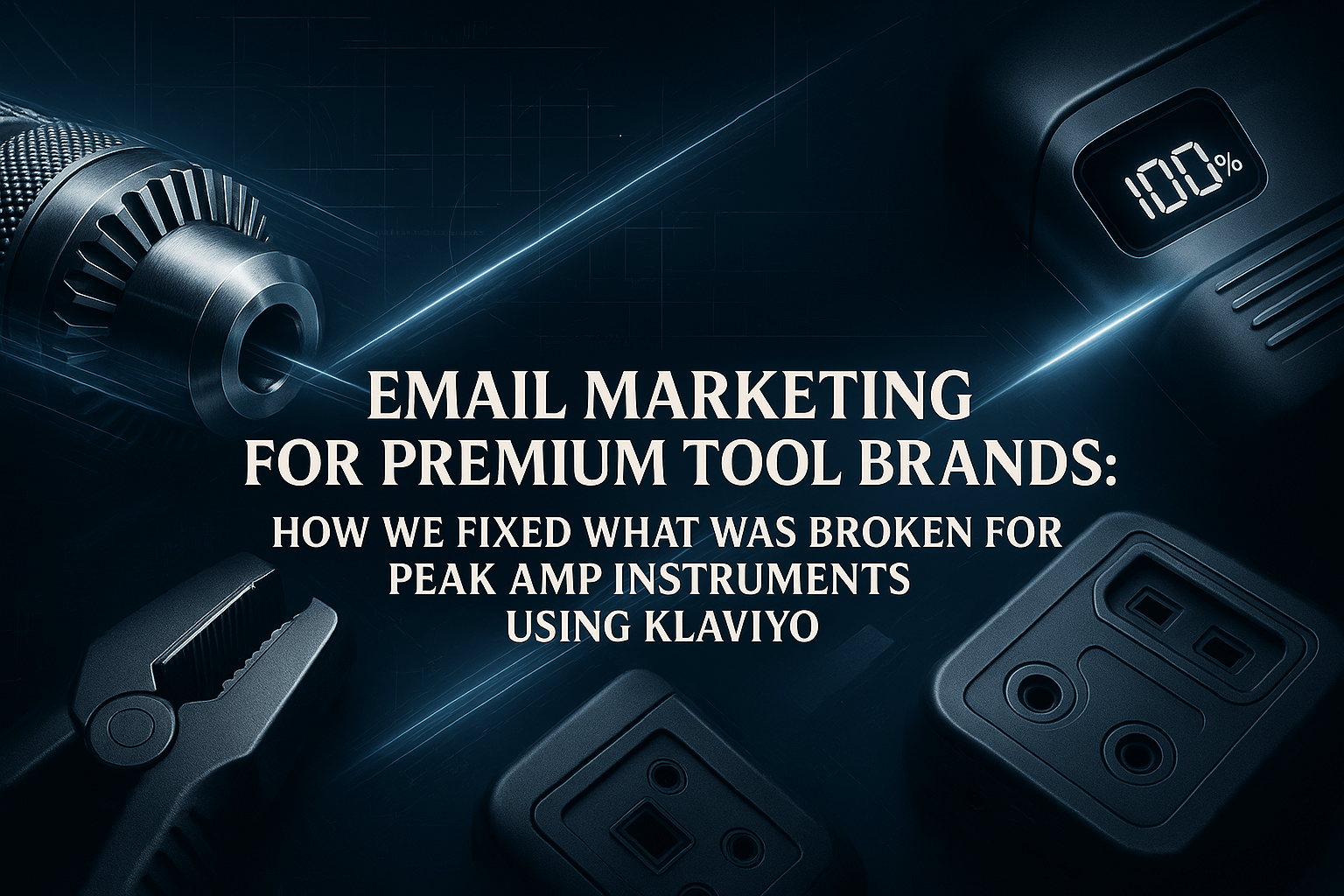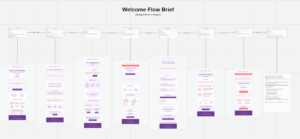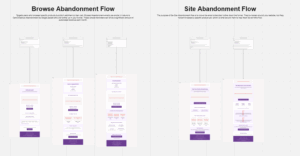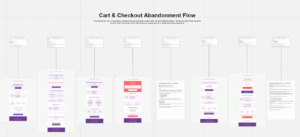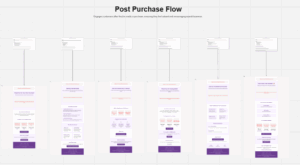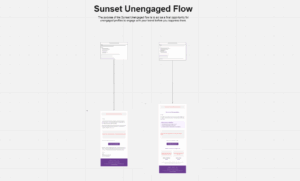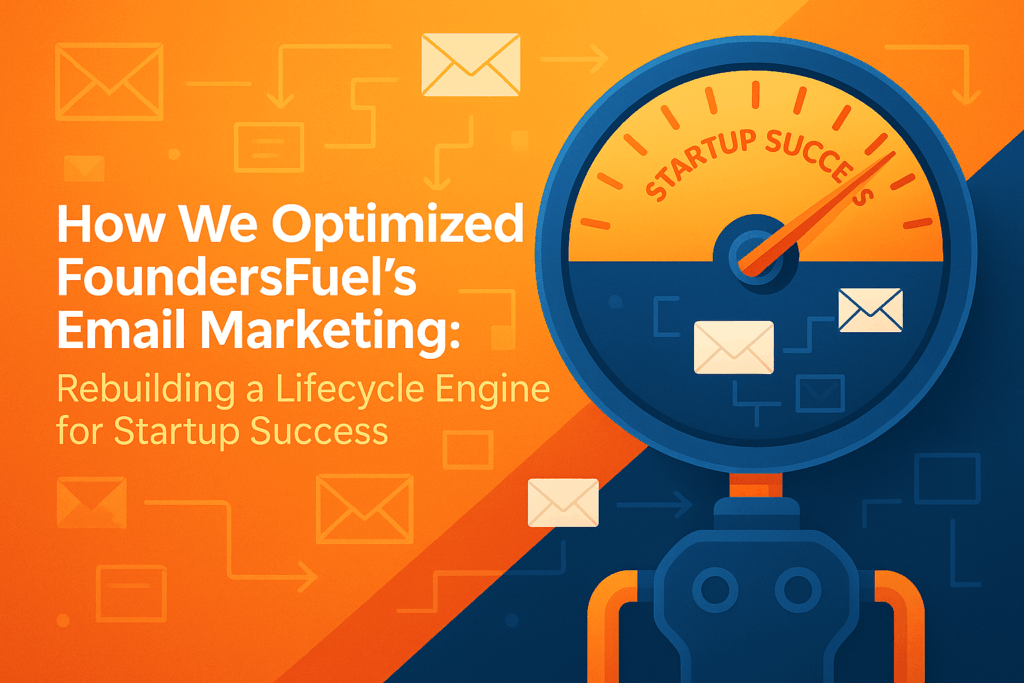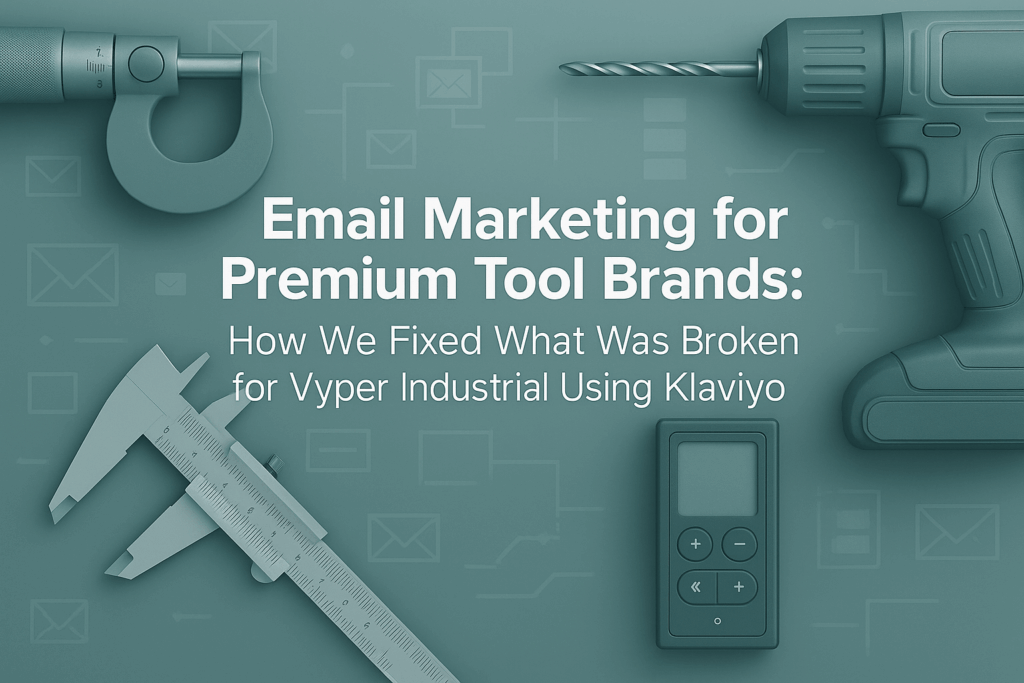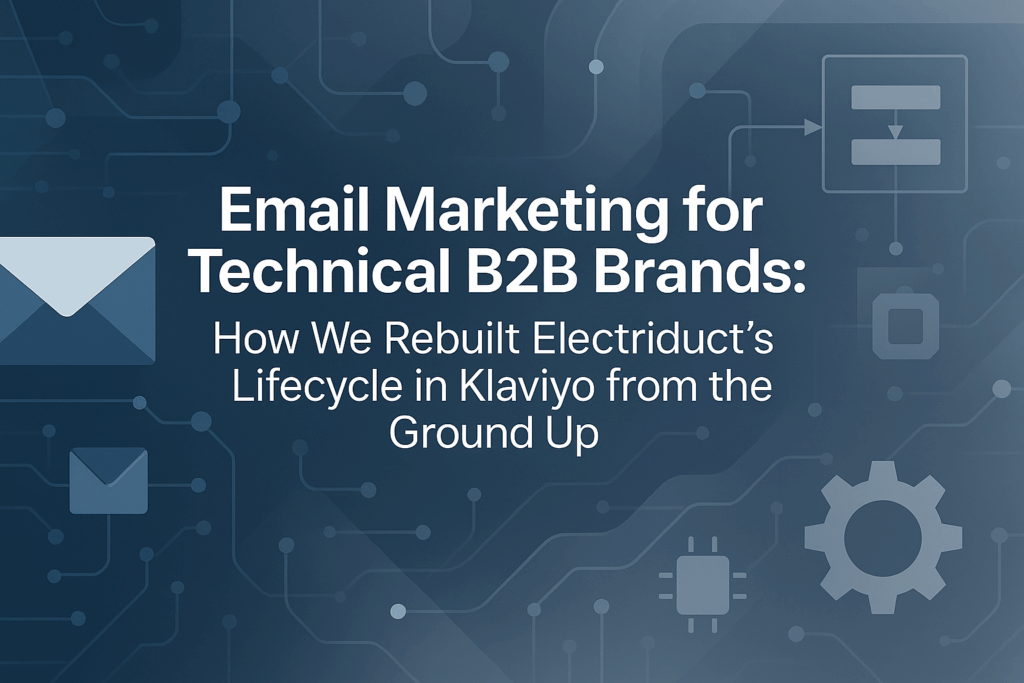When Reliable Products Deserve Equally Reliable Marketing
When your products are trusted to deliver power in emergencies, your marketing should be just as dependable.
Peak Amp Instruments had already carved out a reputation in the automotive and emergency equipment space. Their high-performance jump starters and portable power systems, including the flagship PEAK 900 and heavy-duty Booster PAC ES6000, were go-to tools for pros, off-roaders, and drivers who couldn’t afford failure.
But there was a gap.
Their products were engineered with precision. Unfortunately, their email marketing wasn’t.
Despite a loyal customer base and strong product lineup, Peak Amp’s email performance was lagging. Weak conversion. High abandonment. One-and-done buyers. Emails that looked like afterthoughts, not tools in a performance-driven sales engine.
That’s where we stepped in.
Peak Amp brought us on to rebuild their email marketing from the ground up, not just to sell more jump starters, but to build a smarter, more resilient customer journey that matched their brand promise: power when it matters most.
Here’s what we found:
- Conversion rates from email subscribers to buyers were low
- Cart and browse abandonment flows were nearly nonexistent
- Post-purchase engagement was minimal and mostly transactional
- Emails spoke to everyone and converted no one
- Brand identity was inconsistent or missing entirely
Our job wasn’t to just patch things. It was to build an entire lifecycle system that would turn silent subscribers into loyal buyers and make every email feel like an extension of the product experience itself.
What follows is the complete blueprint we designed: a full-scale Klaviyo email marketing system for Peak Amp Instruments from welcome to winback.
Welcome Flow Optimization: Turning New Subscribers Into Confident Buyers
When someone signs up for emails from a premium power brand like Peak Amp, they’re not just curious, they’re cautious. They want proof that what they’re buying will work in high-stakes moments. That’s why the welcome flow had to do more than deliver a discount. It had to build confidence.
We replaced Peak Amp’s generic 3-email welcome with a high-conversion, 8-email sequence designed to educate, earn trust, and remove doubt while guiding subscribers toward the right product for their needs.
Here’s how each email worked:
1. Welcome + Why Peak Amp Exists
This email opened with a clean introduction to Peak Amp’s mission: deliver power you can count on when it matters most. We positioned the brand as a tool, not a gadget, something professionals trust in emergencies. The 15% welcome offer was framed as a way to “gear up smart,” not just “save now.” A clear layout drove clicks to core product categories while safety certifications and trust badges anchored credibility.
2. A Better Way to Stay Powered
Here, we focused on education. We explained how traditional jump starters fall short and how Peak Amp products solve that. A short story from the founders highlighted why they built these tools in the first place. A side-by-side guide helped subscribers self-select the right unit based on their vehicle type. The tone: helpful, not salesy.
3. What Sets the PEAK 900 Apart
This email was all about the flagship. We broke down key features like instant-start capacity, cold-weather reliability, and durability. Icons explained the tech visually, while a testimonial from a customer who used it during a breakdown made the value real. At the end, we included a quiz CTA: “Not sure if this is the one? We’ll help you choose.”
4. Answers Before You Ask
Before customers could hesitate, we preempted objections. This FAQ-style email covered everything from charge time and compatibility to return policies and warranty coverage. A short video CTA offered a hands-on demo, and a support link gave peace of mind for those who still had questions.
5. Real-World Scenarios
We showed the product in context, powering a work truck, starting a boat in cold weather, and used by a roadside assistance team. This wasn’t marketing copy. These were actual use cases that aligned with customer intent. The email recommended models for each scenario and included a quick “How to Get the Most Out of Your Jump Starter” resource.
6. What Other Buyers Are Saying
This email stacked social proof. Short-form reviews, star ratings, and before/after stories all worked together to reinforce confidence. A callout from a first responder and a mention in a major automotive publication added third-party validation. A “Join the Community” CTA invited customers to connect with others in the Peak Amp ecosystem.
7. Final Reminder With Purpose
The last discount reminder didn’t beg it frame the offer as a smart next step. The copy reinforced the limited inventory of bestsellers and reminded customers that the next time they think “I wish I had that jump starter,” it might already be too late. We added urgency without hype.
8. A Note From the Team
The final email came directly from company leadership. Simple, plain text. It thanked the subscriber, asked for early feedback, and extended a line of communication. No graphics, no promotion, just a signal that Peak Amp values the relationship beyond the first sale.
Why This Flow Works
This welcome sequence performs because it’s not built around discounts; it’s built around trust. Each email earns attention by offering clarity, not clutter: clear product education, targeted use cases, and straight answers to common doubts. For a product that people buy to avoid being stranded, this flow is designed to make the customer feel prepared, not pressured. That’s what turns subscribers into buyers and first-time buyers into long-term customers.
Abandonment Flows Optimization: Re-Engaging Customers Without Chasing Them
In this category, hesitation is normal. Customers are comparison shopping, double-checking specs, and wondering if the product is really worth it. Abandonment flows have one job: help the buyer reconnect to what they already showed interest in and remove the friction that made them pause.
We split our abandonment strategy into two distinct tracks: site abandonment and browse abandonment.
Site Abandonment Flow (2 Emails)
1. Power When You Need It Most
This email picked up right where their session left off. It gently reminded the customer of the category they were viewing, not in a pushy way, but with helpful framing: “Looking for the right jump starter?” We included a short, visual buying guide to help them choose the right model, plus a short story from a customer who used Peak Amp in a breakdown. It wasn’t about urgency, it was about re-sparking interest.
2. Still Searching for Reliable Power?
This follow-up added depth. We compared basic and premium models with a clean, simple chart. No fluff, just side-by-side specs. We included a short testimonial from a customer who upgraded and never looked back. A final section answered FAQs like “How long does it hold a charge?” and “Will it work on my SUV?” The CTA pointed them to the buying guide, not the product page, because the goal was guidance, not pressure.
Browse Abandonment Flow (3 Emails)
1. You Were Looking at the
This was the product recall email. The header showed the exact product they viewed image, specs, and key features paired with a short paragraph reinforcing what made it unique. We included two complementary accessories to build cart value and a clear “Watch it in action” CTA leading to a demo video. No hard sell, just helpful detail.
2. Questions About the ?
This was the support-led email. It surfaced the top five customer questions about the product (battery life, vehicle compatibility, weather performance, etc.) with direct, easy-to-read answers. We also included a single testimonial specific to that product, along with an “Ask Us Anything” CTA that opened a support form.
3. Last Chance for Free Shipping on
The final email created urgency but kept it clean. We offered free shipping for 48 hours and reminded them why this product is designed for serious situations. A testimonial focused on emergency use reinforced the “you’ll be glad you have it” message. The CTA sent them straight back to the product page.
Why This Flow Works
This abandonment strategy works because it doesn’t chase it, clarifies. Each email is timed to when hesitation happens, and responds with the information customers need to move forward. There’s no fake urgency or gimmicks. Instead, we lead with value: comparison guides, product answers, and real use cases that help people justify the purchase to themselves. For a product category built on trust, that’s what closes the gap.
Cart & Checkout Flow Optimization: Rebuilding Confidence Right Before the Finish Line
When someone adds a jump starter to their cart, they’re not just browsing, they’re almost ready. But with higher-priced, technical gear, doubts can creep in fast. Is this the right one for my vehicle? Will it work when I need it? This is where most brands rely on discount emails. We took a different approach: education, clarity, and emotional assurance.
We created an 8-email cart sequence built for consideration-stage buyers. No fluff. Just what they need to feel confident and convert.
1. Your Peak Amp Cart Is Waiting
This first touch is low pressure and straightforward. It shows the exact product(s) left in the cart, backed by clear product imagery, key specs, and reminders of free shipping thresholds. We kept the tone practical: “Still comparing? We’ll hold your gear a bit longer.” Below the CTA, we added trust signals: warranty badge, safety certifications, and payment security logos. It wasn’t a hard sell, it was a soft nudge backed by reliability.
2. Is This the Right Jump Starter for You?
Now we address decision anxiety. This email included a short vehicle compatibility chart tailored to the product, plus a “Good / Better / Best” model comparison. The copy focused on making a smart match, not upselling. We linked to live chat and support at the bottom for added assurance. This was about clarity, not conversion pressure.
3. What Makes Peak Amp Different?
This one went deeper into tech. We used visuals to break down how Peak Amp products outperform generic models with cold-weather reliability, longer charge retention, and reinforced build quality. A short paragraph explained the safety tech in plain English. At the bottom: a real-life quote from a customer who used theirs on the side of the road in winter. CTA: Complete My Order.
4. Free Shipping Still Available
A light offer email, framed around convenience and value. We reiterated free shipping on orders above a certain threshold and showed a bundle with a carrying case and charging accessories. This one helped raise AOV while reinforcing value. The CTA framed the offer as “Get Everything You Need,” not “Buy Now.”
5. When Failure Isn’t an Option
This email got emotional in a good way. We framed the product as a preparedness tool, not a gadget. The copy told a short, grounded story about a customer using Peak Amp in a winter storm. No drama, just real-world stakes. Specs were listed at the bottom for reference. The message: this is gear you hope you never need, but you’ll be glad you have it.
6. Here’s What Owners Are Saying
Full review stack but curated. We featured 3 short testimonials specific to the carted product, plus user-submitted images of the product in action. This helped soften the technical nature of the product by showing relatable use cases. CTA: See More Reviews.
7. Last Chance Cart Closing Soon
This was the time-based nudge. No fake countdown timers, just a clean message: “Your cart will expire in 24 hours.” We summarized the key benefits again and added a direct link to compare models in case they were still on the fence.
8. A Quick Note From Our Product Team
The final touchpoint was a plain-text email from Peak Amp’s product team. It asked if there were any questions, linked to a 2-minute survey to collect drop-off reasons, and offered a support link. Tone: calm, honest, and helpful. This wasn’t a push. It was an open door.
Why This Flow Works
This cart sequence works because it puts the buyer in control and meets them where they are. Instead of pushing harder with each email, we offer what they need at that stage: product clarity, performance comparisons, emotional assurance, and support. The copy is written for real-world use not hype. And by the time they reach the final email, they either trust the product enough to buy or they’ve heard enough to come back later. Either way, we’ve built a smarter path to conversion.
Customer Retention Flows Optimization: Turning First-Time Buyers Into Long-Term Loyalists
For high-consideration products like jump starters, the first purchase is just the beginning. Most customers won’t need another unit anytime soon, but that doesn’t mean the relationship is over. A strong retention strategy keeps customers engaged, informed, and ready for their next upgrade, accessory, or referral opportunity.
We optimized three core flows to build lifetime value: Post-Purchase, Winback, and Sunset. Each one was mapped to specific customer milestones and crafted to feel personal, not automated.
Post-Purchase Flow: Support First, Sales Second
This 6-email flow was designed to reinforce buyer confidence, eliminate post-purchase doubt, and position Peak Amp as a brand that’s serious about performance, not just transactions.
1. Your Order Is Confirmed
This email immediately acknowledged the order and set expectations with a clean, digestible summary: product details, estimated shipping window, and what to expect next. It wasn’t just a receipt, it was a branded, on-message confirmation that introduced Peak Amp’s support culture from day one. It closed with a short thank-you from the team and links to customer service and tracking info.
2. Getting the Most From Your
A day later, we delivered a setup-focused email packed with useful tips. We included a video guide, a “Do This First” checklist, and storage recommendations tailored to real-world use (e.g., keeping it accessible in the trunk, avoiding heat damage). We weren’t just onboarding users, we were positioning Peak Amp as the reliable voice that makes sure their investment pays off.
3. Your Peak Amp Has Shipped
This email did more than deliver tracking info. It reinforced customer excitement while reminding them to fully charge the unit before storing it. We included a short product care reminder and linked to a quick-start video. The tone was proactive, not reactive. We weren’t just notifying; we were also coaching.
4. How’s It Working So Far?
This was our post-delivery check-in. It invited honest feedback, shared a link to common troubleshooting tips, and encouraged users to share photos or reviews. It was designed to feel helpful, not like a marketing ploy, and by using plain, approachable copy, we lowered the barrier to engagement
5. Your Power System, Upgraded
With the basics covered, we now introduce complementary products cases, adapters, and cables, but with care. These weren’t upsells disguised as support. They were framed as “small tools that help your gear go further.” We aligned recommendations with their original purchase and reinforced how these items extend the life and utility of their setup.
6. Refer a Friend. They’ll Thank You Later.
This final email offered a clean, one-click referral program. We used peer-based framing: “You’ve got the peace of mind, pass it on.” It gave customers a meaningful reason to share Peak Amp and reminded them of how essential the product could be for a friend or family member.
Winback Flow: Re-Engage With Purpose
For customers who hadn’t purchased again after 90+ days, we didn’t rush in with discounts. We approached them with relevance and respect. This 5-email flow focused on useful reminders, community value, and product discovery.
1. Still Happy With Your Jump Starter?
We opened with a friendly check-in: no urgency, no promo. We offered seasonal maintenance tips (charging cycles, storage refreshers), reinforced that their product is built for the long haul, and recommended a few accessories based on their original purchase. It felt like a tune-up, not a sales pitch.
2. New Tools. Same Dependable Power.
Here, we introduced new products not for the sake of selling, but to show how the Peak Amp ecosystem continues to evolve. A short highlight reel showed how newer models build on the same performance DNA. It gave customers a reason to explore again without forcing a purchase.
3. Real Users. Real Stories.
We showcased how other customers were using their Peak Amp gear from roadside emergencies to boat launches. The layout featured short testimonials, product photos, and even a few setup tips from “power users.” The CTA wasn’t to buy it was to check out the community hub.
4. Your Loyalty Deserves a Boost
Only now did we introduce a discount and we didn’t shout about it. This was a soft loyalty reward: “Because you’ve been with us, here’s 20% off your next order.” It was framed as a thank-you, not bait. The copy emphasized usefulness: “Need a second unit? Shopping for someone else? We’ve got you.”
5. Just Checking In Before We Go Quiet
The final touchpoint was simple and human. A plain-text email from the team asking if we could help, if they had questions, or if they wanted us to stay in touch. It closed with a single link to the catalog and a support email, subtle, sincere, and surprisingly effective.
Sunset Flow: Clean Exit or Second Chance
For subscribers who hadn’t opened or clicked in 6+ months, we built a minimalist 2-email flow. The goal wasn’t to win them back at all costs, it was to offer one last chance to re-engage or leave on good terms.
1. Still Want to Hear From Us?
This email put the subscriber in control. We listed a few examples of content they’ve missed (new launches, reviews, exclusive guides) and included a simple CTA: “Keep getting updates” or “Take a break.” We also let them update their preferences if full unsubscribing felt too final.
2. Before We Say Goodbye
Sent 10 days later, this email was softer still. A final offer to re-engage, framed as a thank-you. No pressure. No guilt. If they didn’t click, we unsubscribed them and cleaned the list. If they did, they were re-tagged and re-introduced to the welcome sequence with updated preferences.
Why This Flow Works
These retention flows work because they speak to real people, not segments. The tone is helpful, not transactional. Each email aligns with the customer’s experience: offering value when they’re active, respect when they’re dormant, and gratitude when they refer or re-engage. For a product that may not be used often but is always remembered when it is, this system keeps Peak Amp top-of-mind without burning out its audience.
Strategy & Implementation: Building a Lifecycle System That Performs Like the Product
Tactical flows alone don’t build a world-class retention engine; the strategy behind them does. For Peak Amp Instruments, we didn’t just rewrite emails. We architected an end-to-end system that aligns with how their customers shop, buy, use, and refer high-performance power tools.
This wasn’t about “doing more email.” It was about building a fully connected lifecycle, one that mirrors the way people make high-consideration decisions and expect long-term support once the product is in hand.
Audit & Journey Mapping
We started with a deep diagnostic. We reviewed Peak Amp’s existing Klaviyo setup, email performance benchmarks, and subscriber segmentation. But the bigger picture came from mapping their customer journey from first site visit to product delivery and beyond.
We identified the moments that mattered most: first impressions, technical hesitations, time-sensitive abandonments, and post-purchase silence. These were the gaps where revenue and brand loyalty were leaking and where email needed to step in.
Lifecycle Architecture & Messaging Strategy
Next, we mapped the full email system. 7 distinct flows across 34 emails. Each was anchored in a lifecycle milestone: welcome, site abandonment, browse abandonment, cart, post-purchase, winback, and sunset.
We didn’t treat these flows as separate. We made them talk to each other using dynamic triggers, behavioral segmentation, and progressive profiling to ensure no subscriber received redundant or irrelevant content.
Our messaging strategy focused on three pillars: clarity (make the decision easy), credibility (make it feel proven), and calm urgency (move the customer forward without pressure). Every line of copy and every CTA pointed to one thing: confidence.
Copy, Design & Content Development
We wrote every email from scratch. Each subject line, hero section, testimonial, and support link was placed with intent. We used short paragraphs, bullet scannability, and product visuals that matched the seriousness of the product category.
We built modular blocks that could scale across SKUs, specs, badges, reviews, FAQs, and feature callouts and formatted them for both desktop and mobile users, knowing many customers would be on the go or in the field when reading.
We also developed a visual hierarchy system to guide eyes from offer to product to reassurance to action with the same level of performance precisionthat customers expect from Peak Amp hardware.
Testing Plan & Internal Handoff
Finally, we built a handoff playbook. This included annotated wireframes, flow diagrams, Klaviyo logic, and A/B test roadmaps. We outlined which elements to test (subject lines, CTA phrasing, discount timing) and where to iterate based on data.
Most importantly, we created documentation that allowed the Peak Amp team to launch, maintain, and optimize the system without needing us in the loop long-term.
This wasn’t a campaign. It was infrastructure built to perform like the products it supports: dependable, strategic, and ready when it matters most.
Expected Results: From Technical Performance to Marketing ROI
While this system was designed and handed off, not yet launched, we’ve built enough of these to confidently model the outcomes. Based on industry benchmarks, past client results, and the quality of the flows built here, Peak Amp is positioned to see a measurable transformation across the entire email lifecycle.
This isn’t a story of a few quick wins. It’s the blueprint for long-term retention infrastructure that performs just as reliably as the product itself.
Here’s what this system was engineered to drive:
1. 45–55% projected increase in first-purchase conversion
We didn’t just say “Here’s 10% off.” We introduced people to the brand’s purpose, unpacked the product benefits, and built trust from the very first touchpoint. Confidence drives commitment, and that turns curious subscribers into loyal customers.
2. 60–70% recovery on product views, 40–50% on site abandonment
These flows didn’t nag. They answered the real questions — “Is this the right fit for me?” “What makes this different?” With helpful reminders and thoughtful education, we pulled browsers back in without ever pushing too hard.
3. 2.5x revenue recovery on abandoned carts, with a 15–20% AOV boost
The cart flow cleared friction and brought clarity. Why now? What to expect? What goes well with what’s in the cart? That kind of messaging doesn’t just save the sale — it adds value to it.
4. 30–40% increase in accessory attachment rate post-purchase
We didn’t disappear after checkout. We guided people toward what’s next — not with pushy upsells, but with real product education that felt useful, not salesy.
5. 25–35% reactivation of dormant customers (Winback)
We rebuilt the bridge. Quiet, relevant, honest outreach that said, “We get you — and we’re still here if you’re ready.” That kind of tone reopens doors without slamming them.
6. 20 %+ list cleanup efficiency (Sunset Flow)
This flow knows when to stop talking. It steps back with grace, helping Peak Amp maintain a healthy list without burning bridges. It’s clean. It’s respectful. It works.
7. 35–45% increase in email-attributed revenue within 90 days
Because when the full lifecycle is dialed in — and every message earns its place — the revenue follows. Not through luck. Through intention.
The Peak Amp Difference and Why It Had to Extend to Email
Peak Amp builds tools for people who don’t have time to second-guess their gear. The product either works or it doesn’t. That same principle guided this project.
We didn’t just design emails. We built a system that respects real use cases. That educates instead of selling. That closes loops instead of leaving buyers hanging. Every email was written with urgency that feels earned, not forced.
Because for a brand built on performance, the marketing has to work just as hard as the product.
Are you a power equipment or technical product brand trying to squeeze results from a leaky email setup?
We can design a system like this for you, flow by flow, message by message, and give your email marketing the strategic backbone it’s missing.
Contact us and let’s build the system your products deserve.



